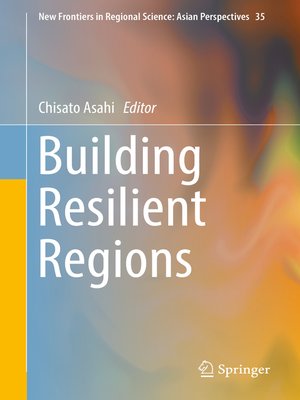Building Resilient Regions
ebook ∣ New Frontiers in Regional Science: Asian Perspectives
By Chisato Asahi

Sign up to save your library
With an OverDrive account, you can save your favorite libraries for at-a-glance information about availability. Find out more about OverDrive accounts.
Find this title in Libby, the library reading app by OverDrive.



Search for a digital library with this title
Title found at these libraries:
| Library Name | Distance |
|---|---|
| Loading... |
This book focuses on building regional resilience by comprehensively improving regional assets. Regional vulnerability depends on the availability of regional assets for the population, as well as the population's ability to access those assets. Such assets include the environment, population size, community, and human capital, as well as traditional physical infrastructure. Identifying and improving these regional assets, which provide resource flows to help cope with regional disruptions—natural disasters, economic crises, or demographic changes— serves to mitigate vulnerability and build resiliency.
The book pursues an interdisciplinary approach to investigating regional resilience, bringing together welfare and environmental economics, public administration, risk and disaster management, policy studies, development studies, and landscape architecture. Up-to-date case studies are provided, including recovery from the Great East Japan Earthquake in Japan, regional developmentfor depopulation areas, and urban policy for smart cities. These studies reflect and share the latest findings on key issues, policymaking and implementation processes, and implications for evaluation methodologies—all of which are indispensable to the building of resilient regions. This book is highly recommended for researchers and practitioners seeking a fresh, interdisciplinary approach to regional and urban development. It provides a valuable reference guide to building resiliency and mitigating vulnerability, both of which are imperative to achieving sustainable regions.






